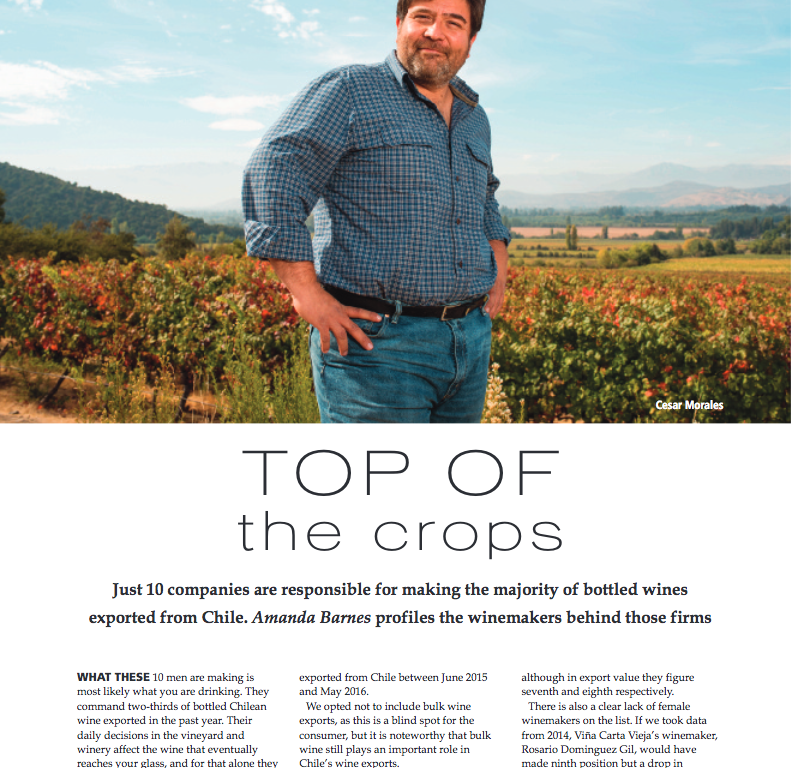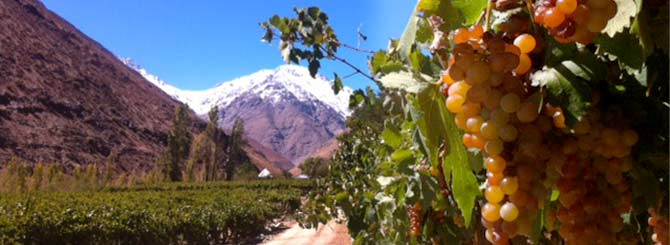Chile’s most powerful winemakers? The Top 10 in numbers

Written for The Drinks Business, Sep 2016 What they are making, is most likely what you are drinking. These ten winemakers command two thirds of the bottled Chilean wine exported in the last year. Their daily decisions in the vineyard and winery impact the wine that eventually meets your glass, and for that fact alone […]
Chile Harvest Report 2016

Written for Decanter April showers hit the Chile 2016 vintage, with some producers describing conditions as more like those on France’s Atlantic coast and overall production down by a fifth versus 2015. With wine regions spanning over 1000km, the Chile 2016 vintage was always going to have regional variation. But, most areas experienced a cooler […]
Chile’s new wave of natural wine

‘Natural wine’ might be a relatively over-talked subject in the wine circles of London, Paris and New York, but in the distant stretches of Chile the discussion is only just starting – or arguably never stopped. The growing undercurrent of natural wine production is further proof that this skinny country is not just screw top […]
Chile Vintage Report 2015

Chile has had a pretty wild ride this year, marked by floods and volcanic eruptions. The resulting wines will be mixed but the warm season looks promising for Mediterranean varieties. Starting in the north of the country, a hot and very dry growing season pushed harvest times forward by a couple weeks. “We have had […]
Empanada and Wine Pairing

Written for Grape Collective If there’s one dish that you’ll find in every country in South America, it’s the mighty empanada. It may be fluffy and moist, or crisp and crunchy, bite sized or head sized, baked or fried… whatever texture and filling variation comes your way, these pockets of pastry are a perfect, unpretentious […]
Top 5 wine countries in South America

Written for the Grape Collective, January 2015 Where else in the world can you find glaciers, jungles, extreme deserts, and high altitude mountains all within one continent? South America is a land of extremes and even though the Spanish introduced wine over 500 years ago, it is still a new discovery to many wine drinkers […]
Celebrating Carmenere Day

Written for Wines of Chile Today marks 20 years since the discovery of Chile’s flagship variety, Carmenere. On 24 November 1994 Jean-Marie Boursiquot discovered that some vineyards in Chile – which were previously believed to be Merlot – were in fact Carmenere.The rediscovery of the variety is an important one, not just for Chile but […]
Discovering Barrio Italia

It is not surprising that with a name like ‘Barrio Italia’ (Italian Neighborhood) this corner of Chile is filled with designers and chefs! Chile has many immigrant influences, and one of the most stylish – and delicious – of those were the Italians. Famed for its Italian roots, excellent cafes and design shops, Barrio Italia […]
Chilean Winemakers to Watch (11-20)
Written for The Drinks Business, October 2014 Chile is well-known for the concentration of its wine production, allowing the country to make consistent wine at competitive prices. But emerging is a new wave of boutique projects from the full length and breath of the country, resulting in original blends from little-known places. The source of […]
10 winemakers to watch in Chile

For The Drinks Business, September 2014 edition Read the full feature: Chilea Winemakers to Watch DB Sep 14 CHILE IS well-known for the concentration of its wine production, allowing the country to make consistent wine at competitive prices. But emerging is a new wave of boutique projects and new styles from the full length and […]

